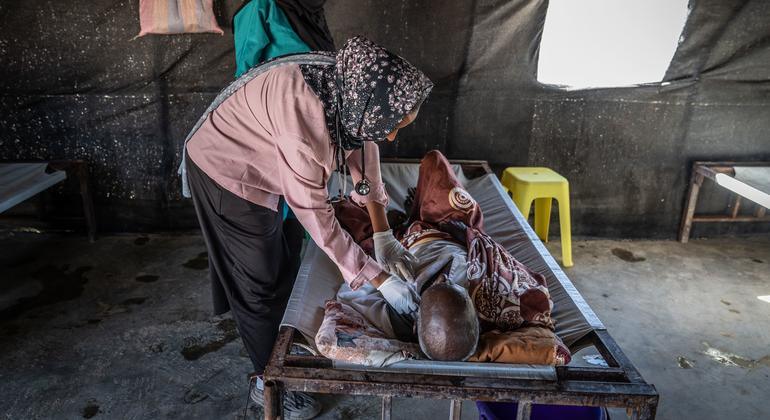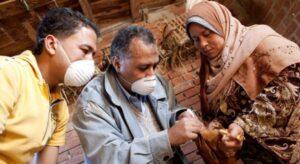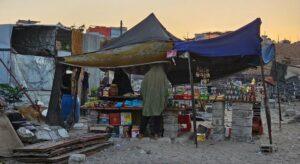So far this year, cholera has killed more than 4,300 people in 31 countries. These figures are underestimated and there is particular concern for those influenced by war in Sudan, Chad, the Democratic Republic Congo, South Sudan and Yemen.
In Sudan, the disease has already claimed over 1,000 lives since January 1st. It has reached every state of the country, a year after the outbreak started, according to WHO.
Cases are rising in war -sized Darfur
With the Sub-Sahara rainy season now underway, the UN agency is concerned about an increase in waterborne disease associated with the huge number of people fleeing through ongoing violence.
“While cases are the plateau or fallen in some areas, including Khartoum, they rise in the Darfur region and neighboring Tchad. In Tawila, North Darfur,” WHO’s Kathryn Alberti said.
Refugees have quadrupled the population from nearly 200,000 to over 800,000, causing tremendous strain on water and sanitation systems, she added.
“People have as little as three liters of water daily, and this is for cooking, washing, cleaning and drinking.”
To answer the problem, who and partners have created task forces, implemented fast response teams for monitoring and storing essential cholera supplies in Darfur – though “large parts” of Darfur and Cordofan remain unattainable.
Humanitarian needs continue to grow in Afghanistan
Four years after the De-Facto Taliban regime took over Afghanistan, more than half of the population needs vital help, according to the UN Humanitarian Office (OCHA).
Women and girls are especially vulnerable because of the increasingly restrictive policies that the Taliban authorities have imposed on them from education, the workforce and public life.
“Humanitarian help is a lifeline for women and girls who are otherwise unable to access important services and help,” said UN spokesman Stéphane Dujarric, on Friday’s daily briefing in New York.
1.7 million returned
OCHA also warned that the return of 1.7 million Afghan citizens of Iran and Pakistan this year has further increased humanitarian needs as most have limited societal bonds and struggles to find shelter and ways to earn life’s stay.
To support the response of the under -resourceed host communities, the UN’s central emergency Response Fund (CERF) recently released $ 10 million, and further funding is in pipeline from the Afghanistan Humanitarian Fund.
But more resources are urgently needed. This year’s humanitarian needs and response plan in Afghanistan is only 25 percent funded, with $ 624 million received by the $ 2.4 billion needed and another influx of refugees is expected in front of Pakistan’s deadline 1.
Uncertainty also increases in Dr. Congo’s residual East
In the War-Heared Eastern Parts Democratic Republic of Congo, OCHA says uncertainty is increasing in the DJIGU territory in ITIS Province.
Clashes between several armed groups and the Congolesian armed forces in several areas have resulted in nearly 50 civilian deaths and more than 30 injuries in the last month alone.
During the same period, violence and uncertainty have led to the displacement of more than 80,000 people in Djugu.
In the attacks, home was looted or burned, and those who fled are now protected in schools, churches and other public buildings.
Targeted killing
There have been three targeted attacks on places hosting internally displaced.
These clashes have severely limited humanitarian access and deprive about 250,000 people essential services. In the Nizi Health District in the Ituri territory, nine out of 12 health facilities are now out of service.
The UN and its humanitarian partners are ready to respond, but they need unobstructed, secure access to do so.
“All parties must take urgent measures to protect civil and facilitative humanitarian access. Civilians must be protected at all times in accordance with international law,” Mr. Dujarric Friday.



